How to Play Sustainability Bingo + 30 Printable Bingo Cards
Introduce your learners to sustainable living habits through the classic game of bingo! Composting, eating leftovers, reducing energy consumption, and planting a garden are just some of the 30+ examples provided in this fun family favorite. This printable includes 30 different game boards, two sheets of calling cards, play instructions, reflective writing prompts, and the NGSS and STEELS standards supported by playing the game! Perfect for classrooms, homeschool groups, and community events of all ages, grab your printable copy of Sustainability Bingo today!
As a former classroom Chemistry teacher, I can’t tell you how many times I used my old, laminated periodic table bingo set to help students memorize the names and symbols of chemical elements. Rather than giving them a traditional paper/pencil quiz to test their knowledge of the correct symbols for various metals, nonmetals, and metalloids, I relied on bingo to gauge their understanding of the content.
Now, as a parent of two elementary school students, I find myself using bingo to help my son and daughter learn the names and symbols of the 50 states that comprise the United States. Using the game of bingo as a teaching tool can have a positive effect on knowledge retention rates, which is why I decided to create a printable sustainability bingo game to introduce sustainable living habits to learners of all ages!
What is Sustainability Bingo?
Sustainability bingo is based on the traditional game of bingo with an eco-friendly theme. Each card contains 24 different images and descriptions of sustainable habits that can be implemented in your home or community to decrease your carbon footprint.
What is a carbon footprint? A carbon footprint is the number of greenhouse gases our daily actions create. Gases such as carbon dioxide and methane are excellent at trapping heat in the Earth’s atmosphere. These gases are necessary for life to exist on our planet, however, an overabundance of greenhouse gases, (which is the current status of the atmosphere) increases the average global temperature of Earth, causing climates to change all over the world.
Playing sustainability bingo is a great way to encourage people of all ages to rethink their daily habits and adopt some new, more planet-friendly ones.
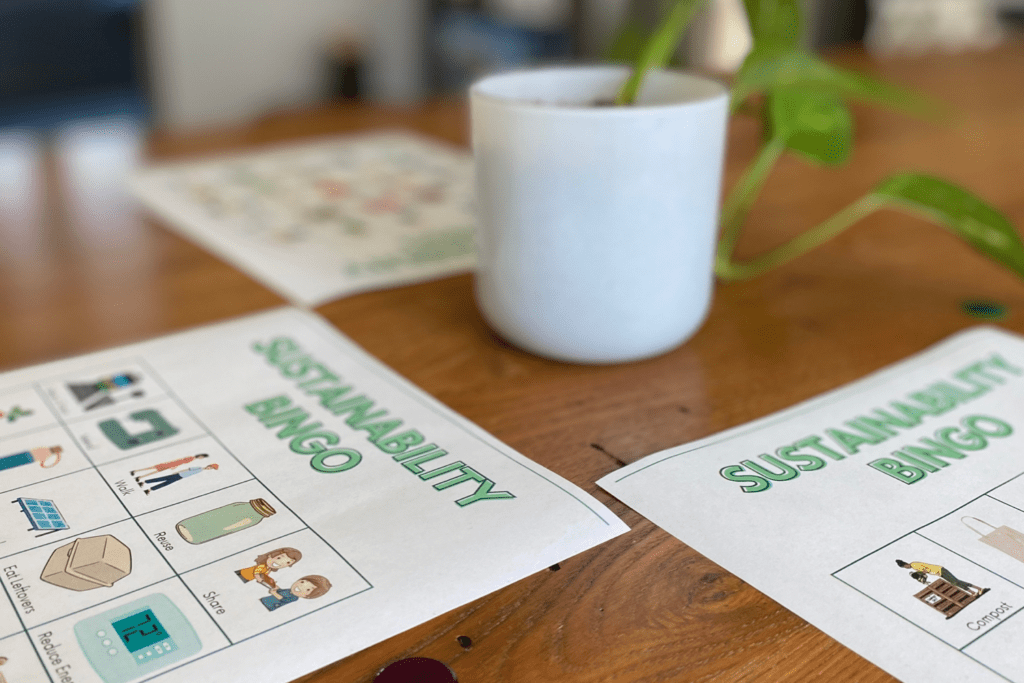
How to Play Sustainability Bingo
Playing sustainability bingo is easy and can be done with little preparation. Here is a short list of materials you’ll need to host your very own planet-friendly bingo game:
Materials Needed to Play Sustainability Bingo
- Printable Sustainability Bingo Playing Cards and Calling Cards
- Bingo chips*
- Envelope or opaque container to hold the calling cards
- Scissors
*You can use just about anything to serve as bingo chips. Some of my personal favorites to use are dried beans, dried popcorn kernels, wooden beads, scraps of paper, or upcycled crayons. I’ve even used small chocolate candies like M&Ms with students, as they love to eat their tokens after we’ve concluded the game!
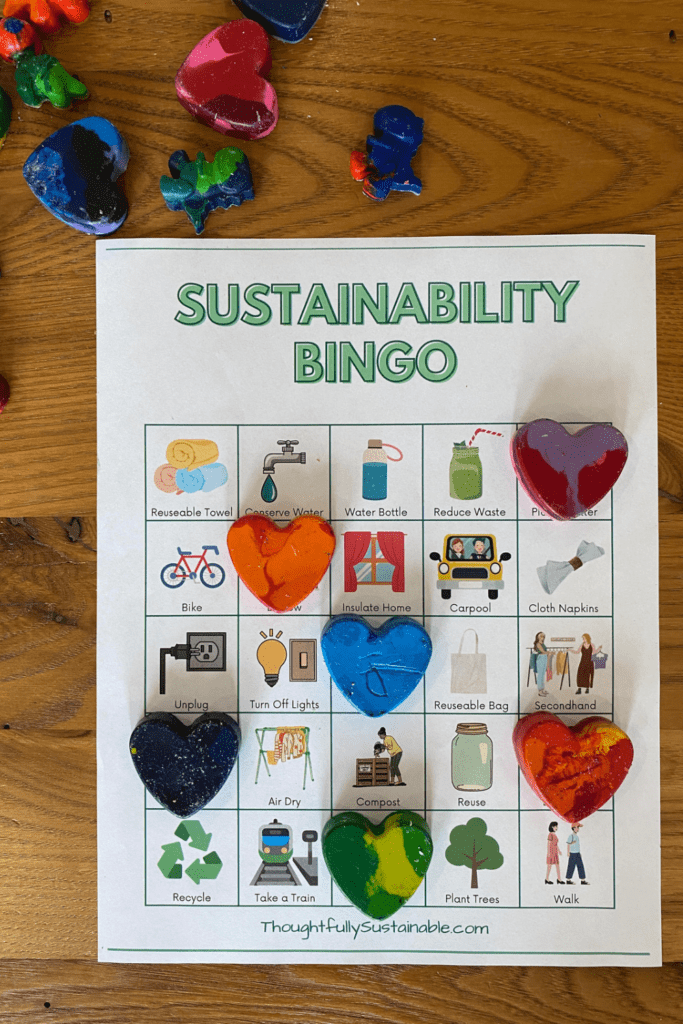
Instructions to Play Sustainability Bingo
Now that you’ve collected your materials, here are the simple instructions for playing sustainability bingo:
- Once you’ve downloaded the sustainability bingo cards and calling cards, determine the number of bingo cards you will need. The printable bingo game contains 30 unique cards, but you may not need that many depending on the size of your audience. Save paper and print only what you need.
- Along with the bingo cards, print the two sheets of calling cards located at the end of the document.
- Cut apart the calling cards and place them in an envelope or any kind of opaque container.
- Distribute a bingo card and a pile of “bingo chips” (see the materials list for bingo chip ideas) to each of your contestants.
- Instruct your audience to play a chip on the free space located in the center of the card.
- Draw a calling card from the envelope, read what it says, then show it to the contestants.
- Instruct contestants to look to see if their bingo card contains the image. If their card contains the image, place a bingo chip on top of the image.
- Continue to draw calling cards, one at a time, from the envelope and read them to the contestants.
- The player that gets five images in a row, either vertically, horizontally, or diagonally, wins the game.
Using Sustainability Bingo as a Teaching Tool
There are a variety of topics you can discuss while playing sustainability bingo with your students or community members, and you mustn’t look any further than the pictures on the bingo cards. This sustainably-minded game addresses composting, reducing energy consumption, minimizing food waste, utilizing alternative energy sources, and much more. Here are a few discussion prompts you can use to get your audience thinking about sustainable habits:
- Why do you think a smoothie is pictured with the term “reduce waste”?
- How can eating locally grown food has a positive impact on the environment?
- What sorts of items would you be willing to share with a friend?
- What does insulating your home have to do with sustainability?
- Besides books, what else can you borrow at the library?
If any of these discussion topics spark an interest in your audience, consider diving deeper into these topics with the following resources:
- How to Build Sustainable Energy Use Habits with Kids
- Delicious Spinach Banana Mango Smoothie Recipe that Reduces Food Waste
- Easy Energy Efficiency Experiment: How Window Coverings Affect Room Temperature
- Libraries Are More Than Borrowing Books
Standards Addressed with Sustainability Bingo
Implementing my Sustainability Bingo game into your home or classroom can effectively address several educational standards related to environmental literacy and sustainability.
NGSS Standards
The Next Generation Science Standards (NGSS) incorporate sustainability concepts within the Earth and Human Activity domain. Relevant standards include:
HS-ESS3-3: Create a computational simulation to illustrate the relationships among management of natural resources, the sustainability of human populations, and biodiversity.
PA STEELS Standards
The Pennsylvania Integrated Standards for Science, Technology & Engineering, and Environmental Literacy and Sustainability (STEELS) emphasize a cohesive K–12 approach to science education. Using my Sustainability Bingo activity aligns with the overarching goals of fostering environmental literacy and promoting sustainable practices among students. Specifically, playing this game addresses the following ELS Big Idea:
3.4.3-5F; 3.4.6-8H; 3.4.9-12H: Environmental stewardship practices are essential to improving environmental quality, sustainability, and community well-being.
By engaging students in identifying and practicing sustainable actions through the bingo game, educators can facilitate discussions and activities that meet these standards, promoting both awareness and application of sustainability concepts in daily life.
5 Places To Play Sustainability Bingo
Playing sustainability bingo is perfect for all sorts of gatherings and events. Here are a few ways you can use this environmentally-focused bingo game with large and small groups:
- Classroom parties
- Library programs
- Family game night
- Church socials
- Earth Day celebrations
- Girl Scout/Boy Scout meetings
- Senior living community gatherings
Perfect for players of all ages, this eco-friendly version of the classic bingo game will keep your audience engaged and may even inspire them to make some changes in their daily routines.
Environmentally Friendly Prizes for Sustainability Bingo
Playing sustainability bingo is fun, but playing bingo with the knowledge that you may win a prize can take the game to a whole new level! Keeping in mind that the underlying learning objective of the game is to introduce and reinforce sustainable living habits, here are a few environmentally friendly prize suggestions for your next bingo battle:
Packets of Native Wildflower Seeds
A quick search online will give you the names of native wildflowers in your area. Pick up a few packets of your favorite varieties of seeds for your next bingo gathering. Another option is to seek out seeds that can be grown to support local pollinators, such as butterfly weed.
Local, In-Season Produce
Everyone will want to win at bingo if fresh, local produce is up for grabs! In addition to being tasty, the purchase will support a local farmer and may spark conversations about where to find local farm stands or markets.
Pre-Loved Items
When advertising your upcoming bingo game, require that every player bring something that is still in good condition, but is no longer needed. Puzzles, pencils, board games, books….the list could go on and on and adds a level of excitement to the thrill of the win. Bonus – it won’t cost you anything!
Secondhand Mugs and Trinkets
Stop by your local secondhand shop and pick up some items that will fit your audience. Small trinkets and games for kids are great, while large print books and puzzles might be well suited for senior members of your community.
Baked Goods
The smell of freshly baked treats is sure to entice everyone to play sustainability bingo! You can have contestants bring in the treats, bake them yourself, or pick some up at your local grocery store or bake shop. Just be sure to include an ingredient list if your baking the goods yourself, to avoid any allergic reactions by your bingo winners.
If You Like Sustainability Bingo…
If sustainability bingo is your cup of tea, you may also want to check out composting bingo! In composting bingo, players will learn about different items that can be composted in a backyard bin. This is just another fantastic way to use the game of bingo as a teaching tool!
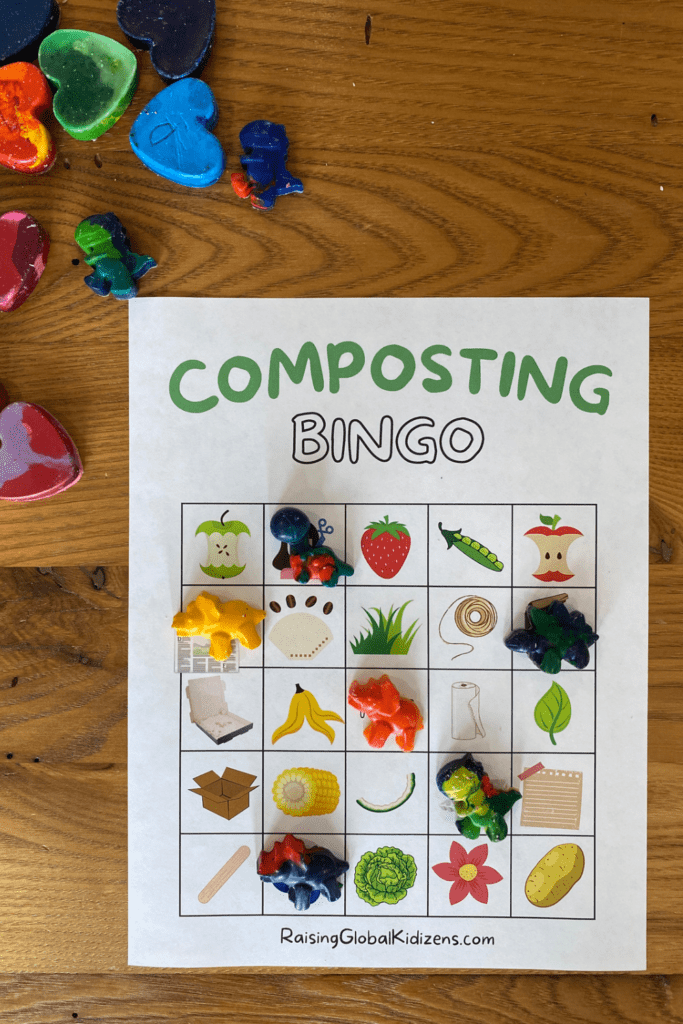

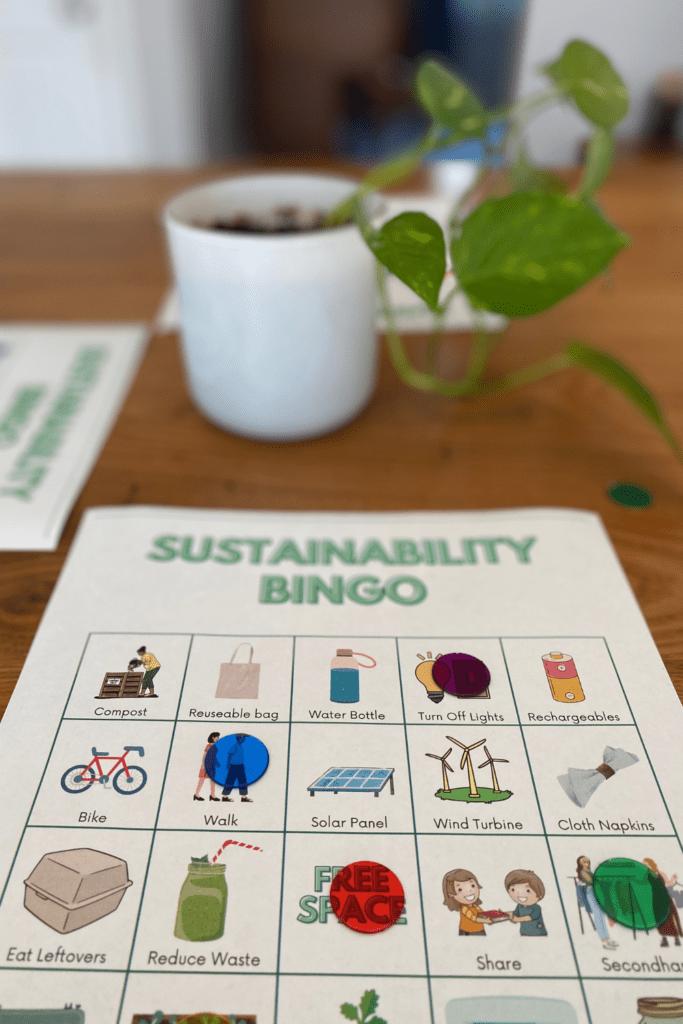
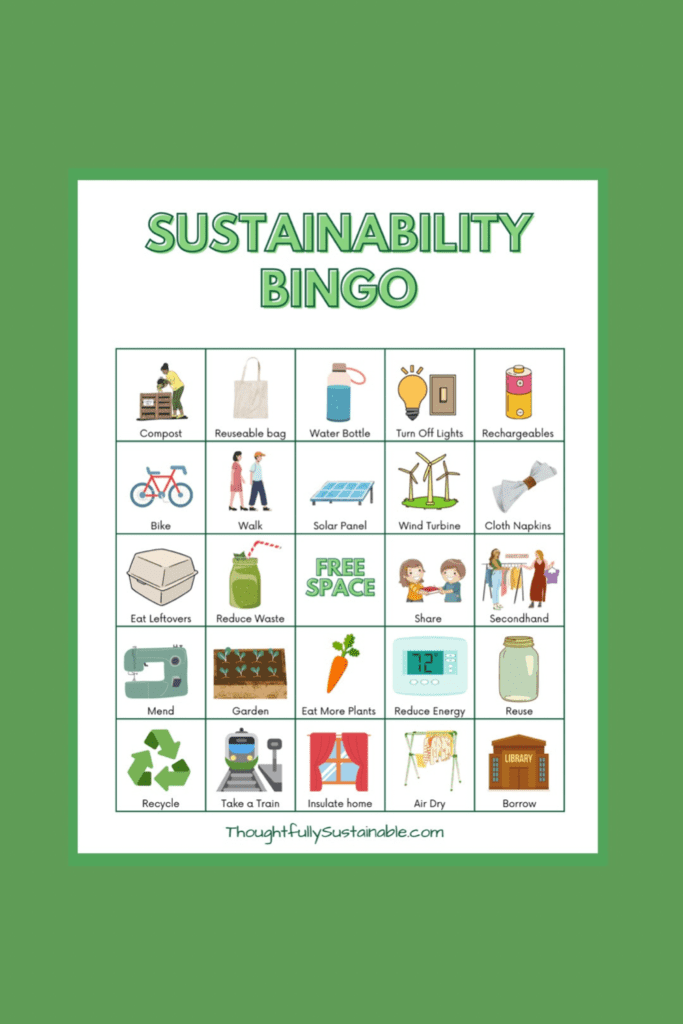
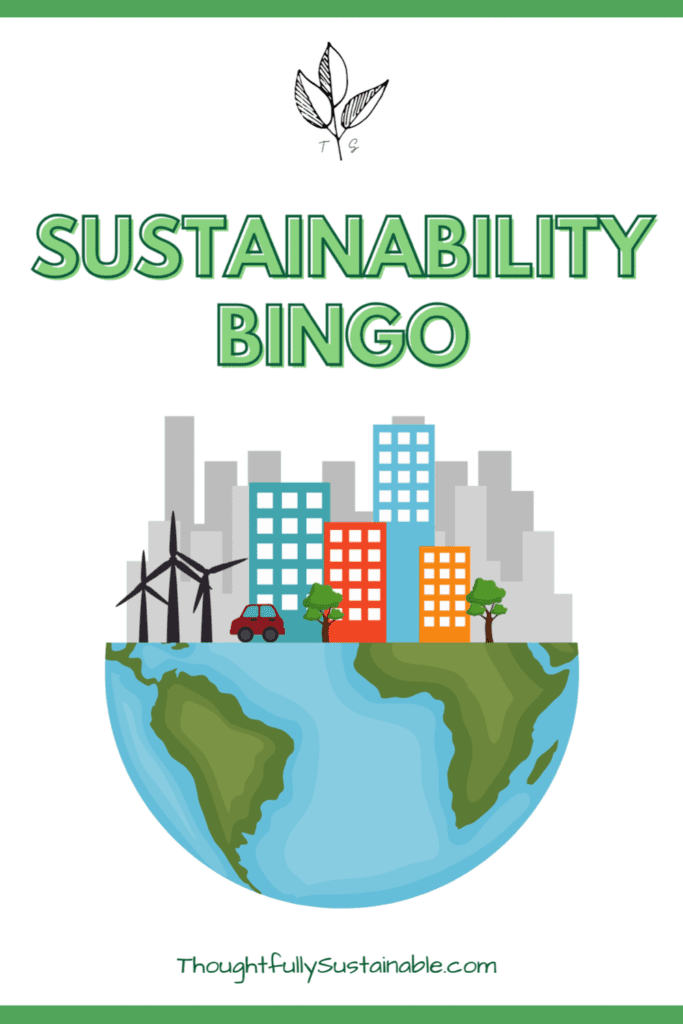

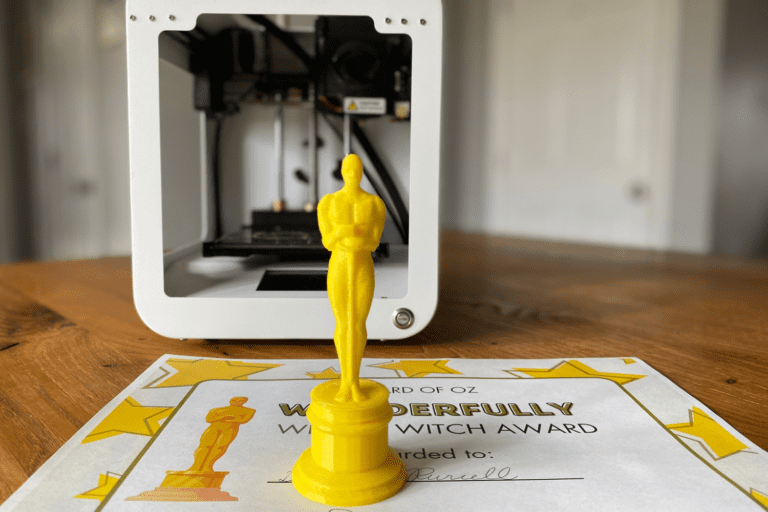
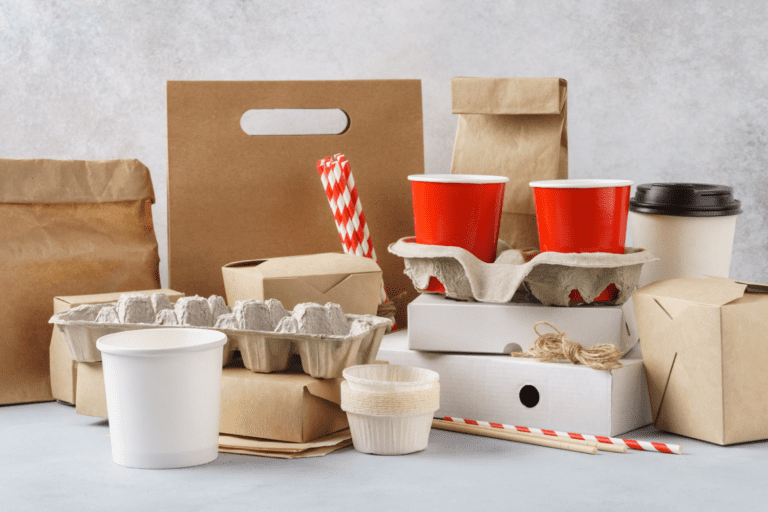

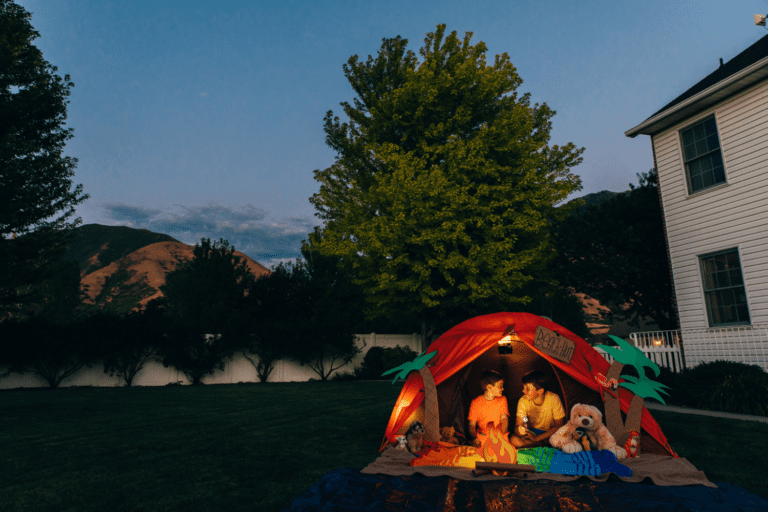
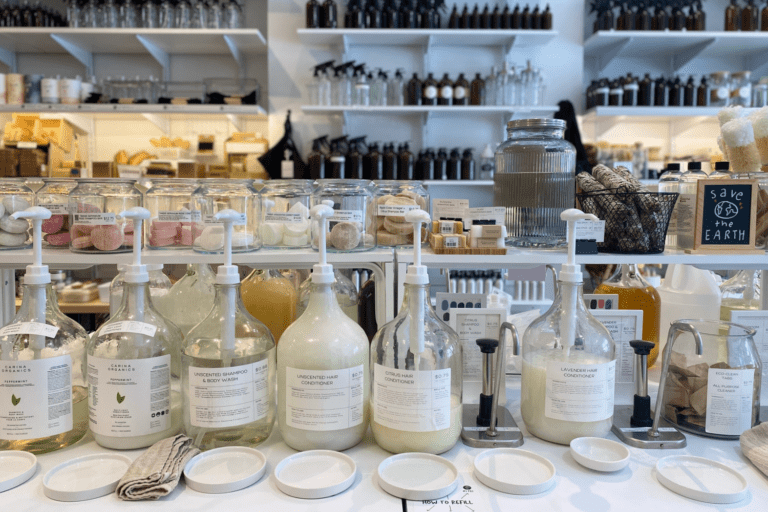
3 Comments
Comments are closed.